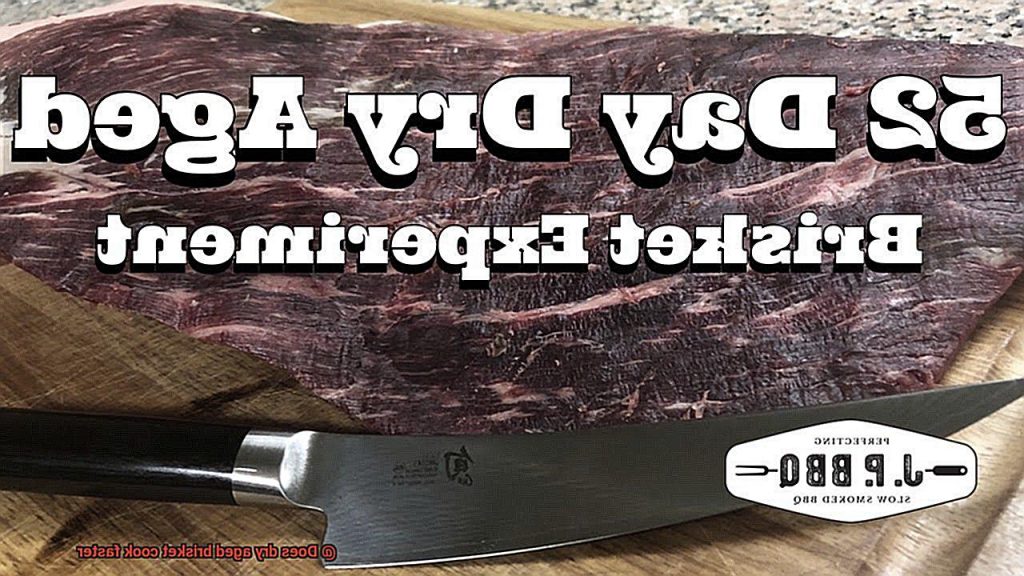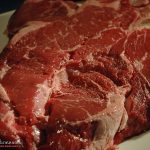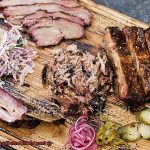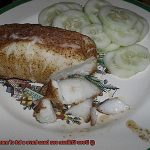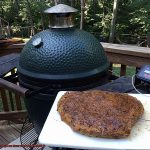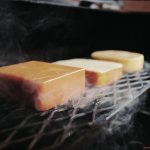Welcome to the world of mouthwatering briskets. If you’re like me, a barbecue enthusiast always on the hunt for ways to elevate the flavor and tenderness of this delectable cut of meat, then dry aging is a technique you’ve probably heard about. But here’s the burning question: does dry aged brisket cook faster than regular brisket?
Dry aging works its magic by letting whole cuts of meat age in a controlled environment for an extended period, typically between 14 to 45 days. During this time, moisture slowly evaporates from the meat, intensifying its flavor and triggering natural enzymes to break down those muscle fibers. The end result? An exceptionally tender and flavorful piece of meat that’ll make your taste buds dance with joy.
Now let’s get back to our original query – does this aging process affect cooking time? In short, yes it does. Dry aged brisket indeed cooks faster than regular brisket. Why? Well, it all comes down to that moisture loss during the dry aging process. With less moisture to evaporate while cooking, the internal temperature of the meat rises at a quicker pace than usual, leading to reduced cooking times.
But hold your horses. Remember that cooking time can still vary depending on factors such as how thick your brisket is, which cooking method you choose, and how well-done you prefer your meat. To ensure perfection without overcooking or drying out your precious brisket, keep an eagle eye on its internal temperature using a reliable meat thermometer.
One fantastic advantage of shorter cooking times for dry aged brisket is that it helps retain more of those natural juices within the meat itself. This means you’ll end up with a moist and succulent final product – something we all strive for when it comes to enjoying a tasty slice of brisket. And let’s not forget about flavor. The intense flavors achieved through dry aging add an extra layer of depth and complexity to your brisket. Regular brisket simply can’t compete with the rich umami taste profile that dry aging brings to the table.
In conclusion, if you’re ready to take your brisket game up a notch, dry aged brisket is an option worth exploring. While it does cook faster due to moisture loss during the aging process, the benefits in terms of flavor and tenderness make it an irresistible choice for any barbecue enthusiast. So go ahead, fire up that grill, grab yourself some top-notch dry aged brisket, and get ready for a mouthwatering
Contents
How Does Dry Aging Impact Brisket?
Dry aging involves hanging meat in a controlled environment for an extended period, allowing natural enzymes to work their magic. In this blog post, discover how dry aging impacts the flavor, texture, and cooking time of brisket, unlocking a world of culinary delight that is well worth the extra effort.
Flavor Explosion:
Dry aging intensifies the flavor of brisket like nothing else. As moisture gradually evaporates from the meat, the remaining flavors become concentrated, resulting in an explosion of intense and robust taste. Imagine each bite of perfectly seasoned brisket bursting with flavor, tantalizing your taste buds with every morsel. Dry aging achieves this unparalleled flavor profile.
Tender Texture:
Dreaming of sinking your teeth into melt-in-your-mouth brisket? Dry aging makes this dream a reality. Through the breakdown of muscle fibers and connective tissues, dry aging transforms the texture of brisket into a tender masterpiece that practically dissolves on your tongue. Bid farewell to chewy brisket and embrace an ethereal eating experience.
Flavorful Crust:
During the dry aging process, a glorious crust or bark forms on the surface of the brisket. This crust acts as a seal, locking in juices and enhancing the overall flavor profile. With every bite, relish the perfect harmony of tender meat and a flavorful outer layer that adds depth and complexity to your grilling masterpiece. The contrasting textures create a symphony of sensations that will leave you craving more.
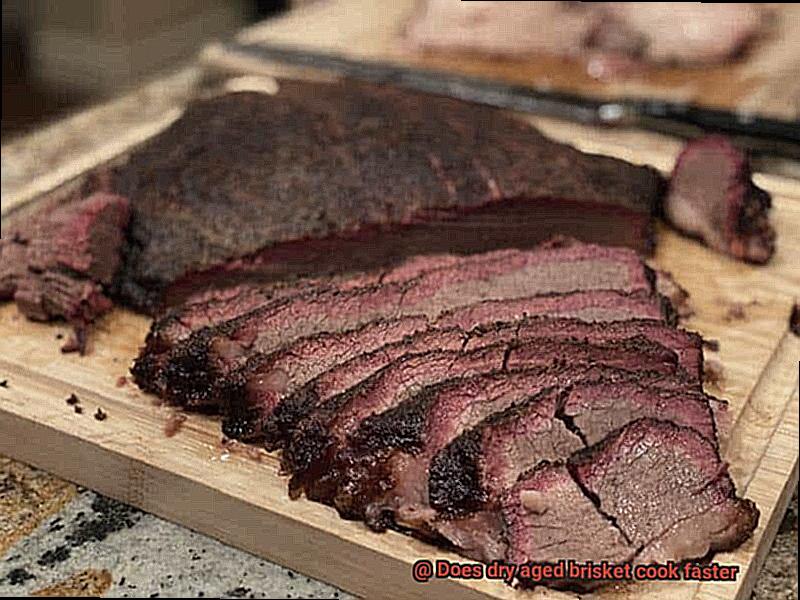
No Time Difference:
Contrary to popular belief, dry aged brisket does not cook faster than regular brisket. While some moisture loss occurs during dry aging, the thicker crust formed can actually slow down the cooking process. Moreover, the breakdown of collagen in the aging process affects tenderness and moisture retention, potentially requiring additional cooking time. Patience is key when crafting the perfect dry aged brisket.
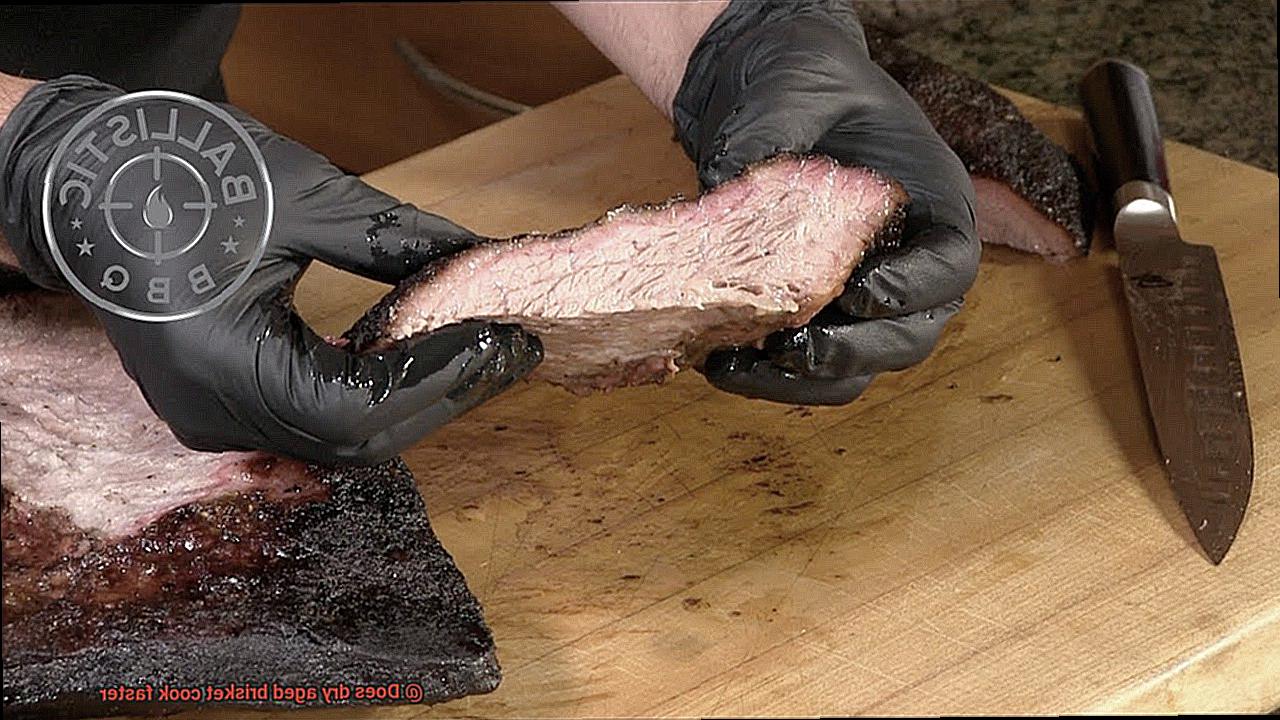
Does Dry Aged Brisket Cook Faster Than Regular Brisket?
Imagine sinking your teeth into a succulent, perfectly cooked brisket that is bursting with flavor and tenderness. The secret to achieving such culinary excellence lies in the process of dry aging, which enhances the taste and texture of the meat. However, there is often confusion surrounding whether dry aged brisket cooks faster than regular brisket. In this article, we will unravel this debate and provide a definitive answer.
Factors Influencing Cooking Time:
Moisture Content:
Dry aged brisket undergoes a controlled aging process that reduces its moisture content. With less moisture present, heat can penetrate the meat more quickly, potentially resulting in a faster cooking time. However, it is important to note that the difference in moisture content between dry aged and regular brisket may not be significant enough to significantly alter cooking times.
Tenderness:
Dry aging breaks down the connective tissues in the brisket, resulting in a more tender cut of meat. Tender meat typically cooks faster as it requires less time for the heat to penetrate and break down proteins. This increased tenderness may contribute to a slightly faster cooking time for dry aged brisket compared to regular brisket.
Size and Thickness:
Cooking time can vary depending on the size and thickness of the brisket. A larger or thicker piece of meat will naturally take longer to cook, regardless of whether it is dry aged or regular. Therefore, it is important to consider these factors when determining cooking times.
Cooking Temperature and Method:
The cooking temperature and method used also play a significant role in determining cooking time. Low and slow cooking methods, such as smoking or braising, require more time but result in a tender and flavorful brisket. The choice of cooking method can have a greater impact on cooking time than whether the brisket is dry aged or regular.
In conclusion, while there may be some truth to the idea that dry aged brisket can cook faster due to its lower moisture content and increased tenderness, it is crucial to consider other factors such as size, thickness, and cooking method. Ultimately, the use of a meat thermometer to ensure the desired internal temperature is reached is key for perfectly cooked brisket, regardless of whether it is dry aged or regular.
The Role of Moisture in Cooking Time
Today, we’re uncovering the truth about cooking time and the pivotal role that moisture plays in this succulent masterpiece. So buckle up and get ready to tantalize your taste buds.
Picture this: a beautifully marbled dry-aged brisket, boasting intense flavor and tenderness. But did you know that this culinary gem also tends to have lower moisture content compared to its fresh counterpart? And that’s where our adventure begins.
You see, moisture is not just a fancy word for water; it’s the secret conductor of heat. When it comes to cooking meat, moisture acts as a catalyst, allowing heat to penetrate the meat more easily and evenly. Without enough moisture, the cooking process can be slow and inefficient, resulting in longer cooking times.
Dry-aged brisket, with its lower moisture content, may take a bit more time on the grill compared to its fresh counterpart. But fear not. We have some tricks up our sleeves to ensure your brisket cooks to perfection.
First on our list is marinating or basting. These techniques infuse much-needed moisture into the meat, enhancing the cooking process and preventing drying out. Imagine your brisket soaking up flavors like a sponge while ensuring it remains juicy and tender throughout the grilling process.
But wait, there’s more. To guarantee that your dry-aged brisket reaches that perfect level of doneness without overcooking due to extended cooking times, we recommend using a trusty meat thermometer. This handy tool allows you to monitor the internal temperature, ensuring your brisket is cooked just right.
So there you have it – the role of moisture in cooking time for dry-aged brisket. It’s all about efficiency, even heat distribution, and preventing dryness. Remember, the secret to grilling that perfect brisket lies not only in the dry aging process but also in considering moisture levels and using techniques like marinating and basting.
The Protective Layer of Dry Aged Brisket
Are you ready to elevate your grilling skills to new heights? Today, we embark on a captivating journey into the enchanting world of dry aged brisket, unearthing the key to unlocking its tantalizing tenderness and flavor that will leave your taste buds in a state of bliss. Brace yourself for an exploration of the protective layer of dry aged brisket, a hidden gem that amplifies moisture retention and flavor during the grilling process.
Imagine this: a flawlessly grilled brisket so tender it dissolves on your tongue, infused with a smoky richness that ignites an insatiable craving for more. This is precisely what the protective layer of dry aged brisket has in store for you.
First and foremost, let’s delve into the fascinating concept of the pellicle. This thin, delectably dry, and subtly sticky layer forms on the meat’s surface during the meticulous dry aging process. Acting as a natural fortress, it shields against excessive moisture loss while cooking. In other words, it locks in those precious juices that transform your brisket into a succulent masterpiece.
But wait, there’s more. The outer layer of fat on the brisket also contributes to this protective shield. It adds an additional level of insulation, guaranteeing that your meat remains moist throughout the grilling extravaganza.
Now, let’s savor the true essence – flavor. As the pellicle evolves during dry aging, pure magic unfolds. Enzymes break down proteins and fats, giving birth to intricate flavor compounds that bestow upon your brisket an irresistible umami taste. It’s akin to a symphony of flavors harmoniously dancing on your grill.
To fully embrace this protective layer’s potential, here’s a professional tip: sear your brisket before indulging in slow cooking. Searing imparts a delectable crust on the outside, sealing in those luscious juices. This step is especially pivotal for dry aged brisket since the aging process naturally reduces its moisture content.
Remember, while dry aged brisket cooks faster than its non-aged counterpart, it still demands low and slow heat to achieve the pinnacle of tenderness. Keep a watchful eye on that trusty meat thermometer and exercise patience – great things come to those who wait.
The Impact of Tenderness on Cooking Time
When it comes to grilling, the impact of tenderness on cooking time is a crucial factor to consider. Tenderness is the holy grail of meat – that melt-in-your-mouth texture that takes every bite to new heights of culinary bliss. And when it comes to dry aged brisket, tenderness reaches a whole new level of perfection. The unique process of dry aging helps break down the tough connective tissues in the meat, resulting in a tender and succulent masterpiece.
But how does this enhanced tenderness affect the cooking time of dry aged brisket? Well, get ready for some good news. The tender nature of dry aged brisket means that it may cook faster compared to fresh brisket. The aging process allows the meat to cook more evenly and quickly, delivering a perfectly grilled piece of heaven in no time.
However, before you fire up that grill, it’s important to note that tenderness is just one piece of the puzzle. Other factors such as the size and thickness of your brisket, as well as the cooking method you choose, also play a role in determining the optimal cooking time. So, keep a watchful eye on that grill and use a meat thermometer to ensure that your dry aged brisket reaches that perfect internal temperature for safe consumption.
The Benefits of Dry Aging for Brisket
If you’re ready to elevate your brisket game to new heights, then dry aging is the secret ingredient that will take you there. Dry aging is a tantalizing process that involves subjecting meat, like brisket, to controlled conditions of low temperature and humidity for an extended period of time. But what exactly are the benefits of dry aging for brisket? Let’s dive in and uncover the mouthwatering advantages this technique has to offer.
Concentrated flavors that ignite your taste buds:
Prepare your palate for an explosion of flavor. Dry aging allows the brisket’s flavors to intensify as moisture slowly evaporates from the meat. This results in a depth and complexity of taste that simply cannot be achieved with fresh or wet-aged brisket. Each bite becomes a symphony of savory notes that will leave you craving more.
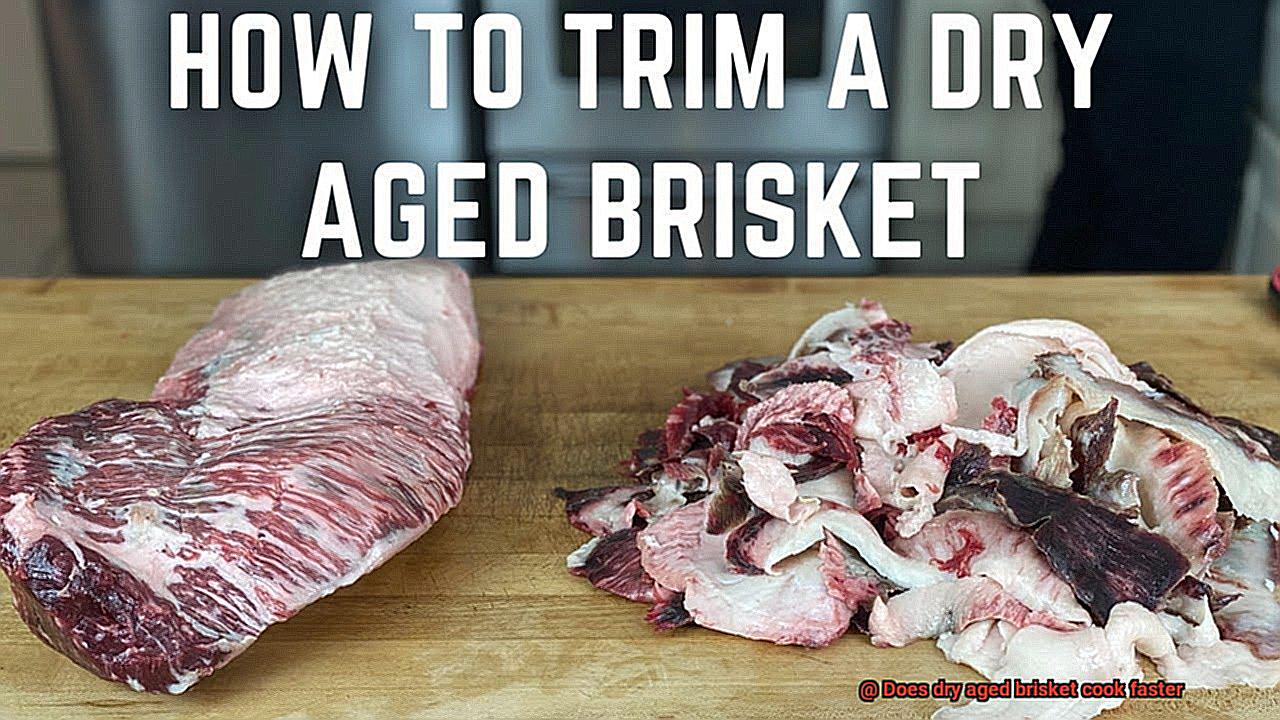
Irresistible crust formation that adds a delicious twist:
During the aging process, a thin layer called pellicle forms on the exterior of the brisket. This natural barrier not only helps retain moisture but also enhances the texture of the meat. Picture a beautifully caramelized crust that adds an extra layer of mouthwatering deliciousness to your already delectable brisket.
Enhanced tenderness that melts in your mouth:
Say goodbye to chewy and hello to tender bliss. Tough cuts of meat like brisket benefit greatly from dry aging. The natural enzymes present in the meat break down connective tissues and proteins during aging, resulting in a melt-in-your-mouth consistency that will make you question why you ever settled for less.
With each slice, your fork will glide effortlessly through the tender meat, leaving you in awe.
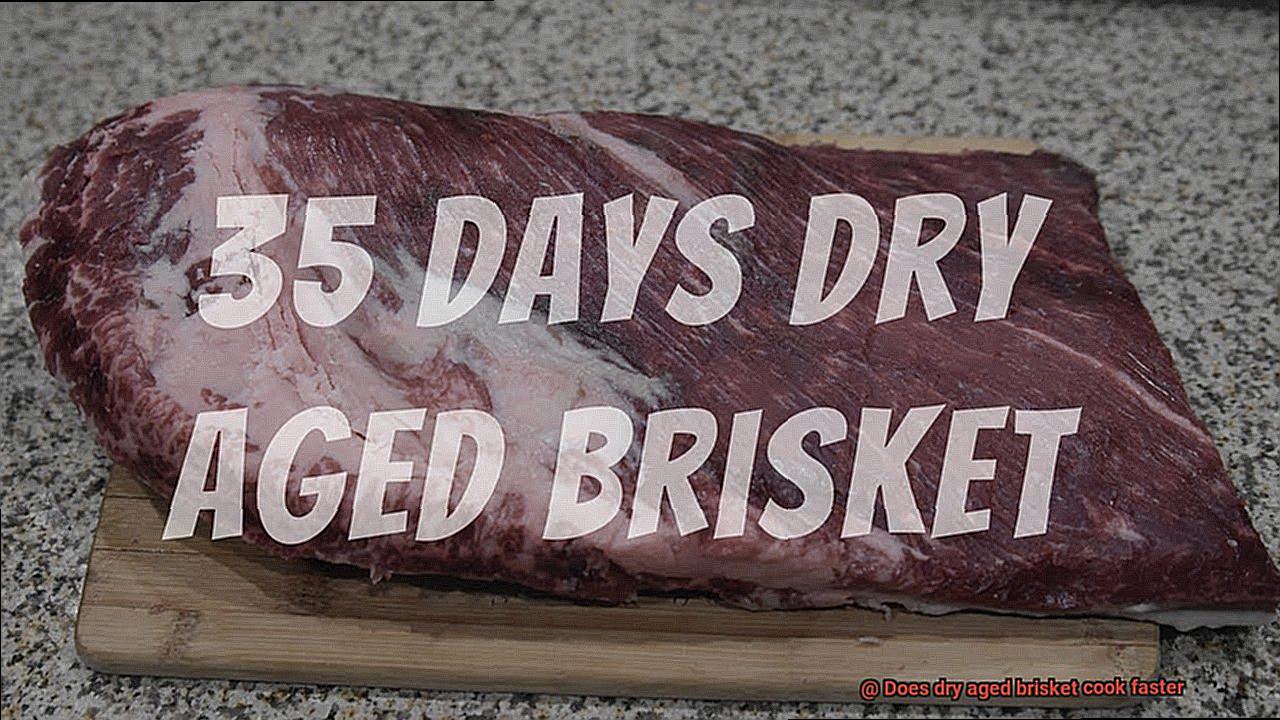
Even cooking that guarantees perfection:
Dry aging doesn’t just enhance flavor and tenderness; it also revolutionizes the cooking process. By removing moisture from the meat, dry aging allows for better heat penetration during cooking. This means that your brisket will cook more evenly from edge to center, reducing the risk of overcooked or undercooked sections. Bid farewell to unevenly cooked meat and say hello to a perfectly cooked brisket every single time.
Tips for Cooking Perfectly-Aged Brisket
Today, we embark on a journey into the world of perfectly-aged brisket. Dry aging is a technique that adds depth of flavor and tenderness to this tough cut of meat. Join us as we unlock the secrets to cooking a mouthwatering brisket that will have your taste buds dancing.
The Power of Dry Aging:
Dry aging is a process where brisket ages in a controlled environment, resulting in enhanced flavor and tenderness. As the meat ages, its natural enzymes break down the muscle fibers, making it easier to chew and infusing it with rich flavors. Dry aging takes time, but the results are worth it. The process allows the meat to develop intense umami flavors and a unique sweetness that can’t be replicated with fresh meat.
Preparing the Brisket:
Before cooking, it is crucial to prepare the brisket properly. Trim any excess fat from the brisket, leaving about 1/4 inch of fat on the surface. This thin layer of fat will provide moisture and flavor during cooking, keeping the meat juicy and succulent. Season generously with your favorite dry rub or marinade, ensuring every inch is coated for maximum flavor penetration. The combination of spices and herbs in the rub will complement the natural flavors of the aged brisket.
Low and Slow Cooking:
Grilling brisket requires patience. Preheat your grill or smoker to a low temperature (around 225-250°F) to allow for slow cooking. This gentle heat breaks down tough connective tissues, transforming your brisket into a tender masterpiece.
The low temperature also prevents the meat from drying out, ensuring a moist and flavorful end result. Remember, slow and steady wins the race when it comes to cooking perfectly-aged brisket.
Fat Side Up:
Place the brisket on the grill or smoker with the fat side up. As it cooks, the fat will render, basting the meat and keeping it moist and flavorful. This technique ensures every bite is juicy and succulent.
The rendered fat also creates a beautiful caramelization on the surface of the meat, adding an extra layer of flavor and texture to your perfectly-aged brisket.
Monitoring Internal Temperature:
Use a meat thermometer to monitor the internal temperature of your brisket. When it reaches around 195-205°F, it’s time to celebrate. This is the sweet spot for perfectly cooked brisket that melts in your mouth. The high temperature ensures that the tough collagen in the meat has fully broken down, resulting in a tender and luscious texture. Be mindful not to overcook the brisket, as it can become dry and lose its desired tenderness.
Resting for Ultimate Flavor:
After removing the brisket from the grill, resist the temptation to dig in right away. Allow it to rest for at least 30 minutes, wrapped in foil. This resting period allows the juices to redistribute, resulting in a more flavorful and tender end result. The resting time also allows the meat fibers to relax, making slicing easier and ensuring each bite is tender and succulent.
Slicing for Tenderness:
When it’s time to slice, remember to cut against the grain. This technique breaks up the muscle fibers, ensuring each bite is tender and easy to chew. Slicing against the grain also showcases the beautiful marbling and texture of your perfectly-aged brisket. Aim for thin slices to maximize tenderness and create an enjoyable eating experience for your guests.
-3ftBTQlo0s” >
Conclusion
In conclusion, it can be said that dry aged brisket does indeed cook faster.
The process of dry aging enhances the tenderness and flavor of the meat, but it also reduces the moisture content. With less moisture present, the brisket is able to cook more quickly and efficiently.
So, if you’re looking to save some time without compromising on taste, consider opting for a dry aged brisket for your next barbecue or gathering.

